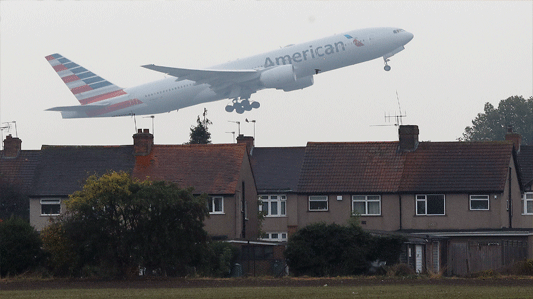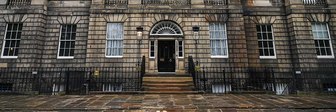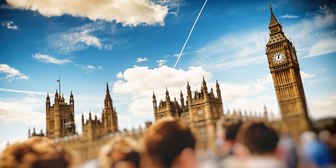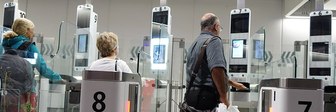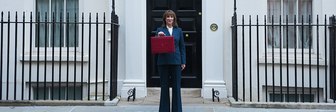Politicians commonly take ages making up their minds and with good reason: it’s not only the nation that has to live with the consequences of their decisions, but they do too, usually in the form of lost votes. But no decision-making has been so drawn out as whether (and how) to expand London’s airports. On one calculation it’s taken nearly fifty years.
This week, however, Theresa May’s government has finally given approval for a third runway at Heathrow. Now the fun begins. Serious problems with the plan still need sorting out and it faces massive opposition, which is not going away. Boris Johnson believes it is ‘very likely’ it will never happen. Should it, and will it?
London’s first commercial airport, Heathrow, opened for business in 1946. In a meeting that was reported to have taken only about forty minutes it had been decided to convert an old RAF aerodrome in the west of London for the purpose, even though it was close to the sprawling housing developments that had sprung up between the wars in west and south-west London. No one, perhaps, quite foresaw how rapidly demand for air travel would grow.
Even the opening of London’s second airport, at Gatwick, in 1958 didn’t satisfy that growing demand for long and by 1968 it was already clear more needed to be done. Harold Wilson’s government set up an inquiry that recommended a wholly new airport in Buckinghamshire.
That never happened. Nor did a mooted airport in the Thames Estuary. The problem was that Heathrow had already become too big to abandon in favour of a wholly new main ‘hub’ airport elsewhere; but equally, expanding Heathrow to satisfy the growing demand was hugely difficult given the airport’s closeness to the centre of London and its western suburbs.
In 2003 the Labour government finally bit the bullet and opted for a third runway at Heathrow, sparking a huge political controversy. David Cameron, on becoming Tory leader in 2005, said his party would oppose the idea with ‘no ifs, no buts’, and one of his members of parliament, Theresa May, with a constituency close to Heathrow, said she too was opposed.
But when they formed a coalition with the Liberal Democrats, the Tories had to deal with the problem of London’s airport capacity and they did so by setting up an Airports Commission under Sir Howard Davies and it eventually came to the same conclusion as Labour: a third runway at Heathrow was the best option. Mr Cameron hesitated once more, putting off a final decision until he’d got the Europe referendum out of the way, but that, of course, got him out of the way and it was left to Theresa May to take the final decision.
In essence she has accepted Sir Howard’s case that London needs a hub airport for Britain to remain internationally competitive. And in the aftermath of the Brexit vote she has wanted to make a bold statement that Britain is still ‘open for business’. Her transport secretary, Chris Grayling, said; ‘This is an issue of national interest that touches every part of the UK, which is vital to the economic prosperity and global status of our nation.’ Sir Howard said the new runway would boost the British economy by £147bn by 2050, though the government now reckons it’s more like £61bn.
But Mrs May has had to compromise the principle of collective cabinet responsibility in order to prevent the decision from causing significant resignations from her government. Ministers who oppose the decision are being allowed to speak out against it but not actively to undermine it. One of them, Justine Greening, the education secretary whose Putney constituency lies under the flight-path to Heathrow, said last March: ‘Trying to expand Heathrow is like trying to build an eight-bedroom mansion on the site of a terraced house. It is a hub airport that is simply in the wrong place.’ Her backbench colleague, Zac Goldsmith, has resigned his seat of Richmond in south-west London to fight against the decision as an independent. The Tory party has most unusually decided not to put up a candidate against their former MP.
The statistics related to Heathrow’s expansion give all the evidence that’s needed as to why there will be continuing opposition. It is estimated that by 2050 there will be 138m passengers a year using the expanded Heathrow, compared with 75m now. There will be 740,000 flights compared with 480,000 now. Noise will affect 640,000 London residents compared with 456,000 now. Boris Johnson said: ‘No other world city would dream of subjecting so many hundreds of thousands of people to more noise pollution in the way that the third runway would.’
In addition there is the direct effect on those living where the new runway will be built. Seven hundred and eighty three houses, including much of the ancient village of Harmondsworth, will be destroyed and 400 hectares of green belt built over. Still to be resolved are major issues such as how to fit the new runway alongside the M25, which runs six lanes in each direction round Heathrow. Either a tunnel under the runway will have to be built for the motorway, causing massive upheaval during construction; or the runway itself will have to be built as a bridge over the motorway.
Many cost issues too remain unresolved. The main cost of construction will be be borne by the private sector, the shareholders of Heathrow airport, but transport link costs will be in part borne by the taxpayer. Estimates range from £3.5bn to £18bn.
The decision will also face almost immediate legal challenge. Four Tory councils (including the one in Mrs May’s own constituency) are combining to seek judicial review of the decision, largely on the basis that they believe the third runway would breach legally-binding air pollution targets. Some areas of London north of Heathrow are already 60% over limit. Sadiq Khan, London’s Labour mayor, has suggested he too might fight the plan on these grounds.
So what this week’s decision does not do is guarantee when – or even whether – the runway will actually be built. The government itself is delaying for a year, giving Parliament the opportunity to vote on it, and even if it gets the backing of the Commons, the proposal will still have to apply for planning permission. That procedure took four years when Heathrow applied to open a fifth terminal.
Supporters of the third runway are hoping that over this extended period many of the opponents’ worries can be met. In particular they are hoping that greater use of public transport to reach Heathrow will lessen the air pollution threat and that quieter plane technology will reduce noise levels. In short the battle now commences.
Should a third runway at Heathrow be built? And will it?
